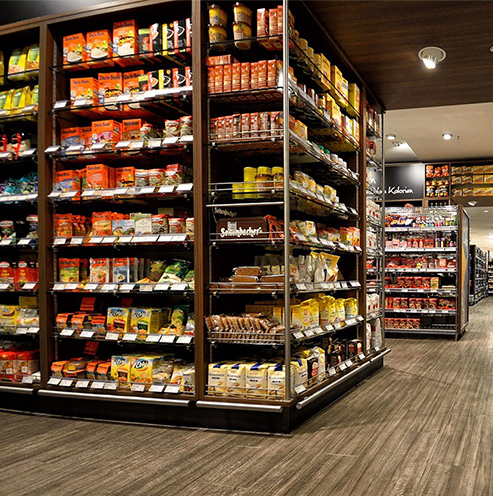Eco-friendly alternatives to traditional grocery bags for sustainable shopping practices
The Rise of Biodegradable Grocery Bags A Sustainable Solution
In an age where environmental concerns take center stage, the quest for sustainable alternatives to traditional plastic has become increasingly urgent. Among these alternatives, biodegradable grocery bags have emerged as a viable solution, promising to reduce environmental impact while catering to consumer convenience. This article explores the benefits, challenges, and implications of biodegradable grocery bags in our daily lives.
Understanding Biodegradable Grocery Bags
Biodegradable grocery bags are designed to break down naturally over time, unlike conventional plastic bags that can take hundreds of years to decompose. They are made from materials that can be decomposed by microorganisms, turning them into natural substances. Common materials include plant-based polymers, such as corn starch, as well as other biodegradable plastics like polylactic acid (PLA). These materials allow the bags to decompose in composting environments, returning essential nutrients to the soil.
Environmental Benefits
The primary advantage of biodegradable grocery bags lies in their potential to mitigate plastic pollution. With billions of plastic bags littering our oceans and landscapes, the introduction of biodegradable options presents a pathway to reducing this burden. By breaking down more quickly than traditional plastics, these bags can significantly decrease the amount of waste that ends up in landfills and ecosystems.
Additionally, biodegradable bags can help reduce the carbon footprint associated with plastic production. Conventional plastic manufacturing relies heavily on fossil fuels, contributing to greenhouse gas emissions. In contrast, many biodegradable materials can be sourced from renewable resources, further promoting a circular economy. This shift not only conserves non-renewable resources but also encourages sustainable agricultural practices.
Challenges Facing Biodegradable Bags
biodegradable grocery bags

Despite their clear advantages, biodegradable grocery bags are not without challenges. One of the most significant issues is consumer understanding and acceptance. Many consumers are unaware of the differences between biodegradable bags and traditional plastic bags, leading to confusion regarding their disposal. It is crucial for educational initiatives to inform the public about proper disposal methods, as biodegradable bags often require specific composting conditions to break down effectively.
Moreover, there is the challenge of infrastructure. Composting facilities capable of processing biodegradable materials are not widely available in all regions. In places where such facilities exist, the bags may still end up in regular landfills if consumers are unaware of how to dispose of them properly. Consequently, without the right composting environment, these bags may take longer to decompose, undermining their intended benefits.
Another concern involves the environmental impact of producing biodegradable bags. While they might be more eco-friendly than traditional plastic bags, the cultivation of crops for bioplastics can lead to other environmental issues, such as deforestation and water consumption. Striking a balance between sourcing materials sustainably and producing biodegradable products remains a challenge.
The Future of Biodegradable Grocery Bags
As awareness of environmental issues continues to grow, biodegradable grocery bags represent a promising step towards sustainable consumer behavior. Manufacturers are increasingly innovating to create more effective and environmentally responsible products. Biodegradable technology is rapidly advancing, and new materials are being developed that can break down more efficiently, even in less-than-ideal composting conditions.
Regulatory frameworks are also evolving, with many governments around the world moving to ban single-use plastics while promoting biodegradable alternatives. As legislation continues to favor environmentally friendly products, the market for biodegradable grocery bags is likely to expand, making them more accessible to consumers.
Conclusion
Biodegradable grocery bags are an essential part of the solution to the environmental crisis we face today. While they offer significant benefits over traditional plastic bags, overcoming the challenges associated with consumer awareness, infrastructure, and production methods is vital for their success. As technology advances and public consciousness shifts, biodegradable bags have the potential to play a crucial role in fostering a more sustainable future, allowing us to reduce plastic pollution and promote environmental stewardship. By making conscious choices in our shopping habits, we can collectively contribute to a healthier planet for generations to come.
-
Have the freedom of customizing your custom mailers any way you want! Our dedicated packaging support will help deliver you the mailing experience you need to elevate your shipping experience to the next level! Start making a strong impression on your customers and stand out from your competitors! -
LIYA uses high quality raw materials which directly purchased from large enterprises domestic and overseas such as PetroChina, Sinopec, Sabic, Equate, ExxonMobil, Dow Chemical, Total, and Borouge, ensuring the price advantage and quality of the raw materials. -
LIYA uses high quality raw materials which directly purchased from large enterprises domestic and overseas such as PetroChina, Sinopec, Sabic, Equate, ExxonMobil, Dow Chemical, Total, and Borouge, ensuring the price advantage and quality of the raw materials.





